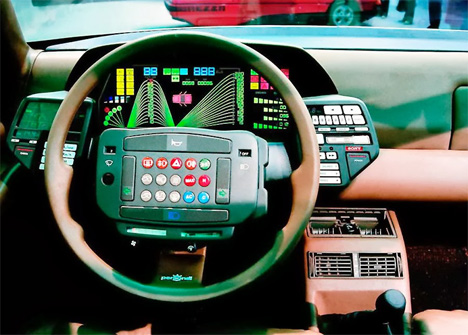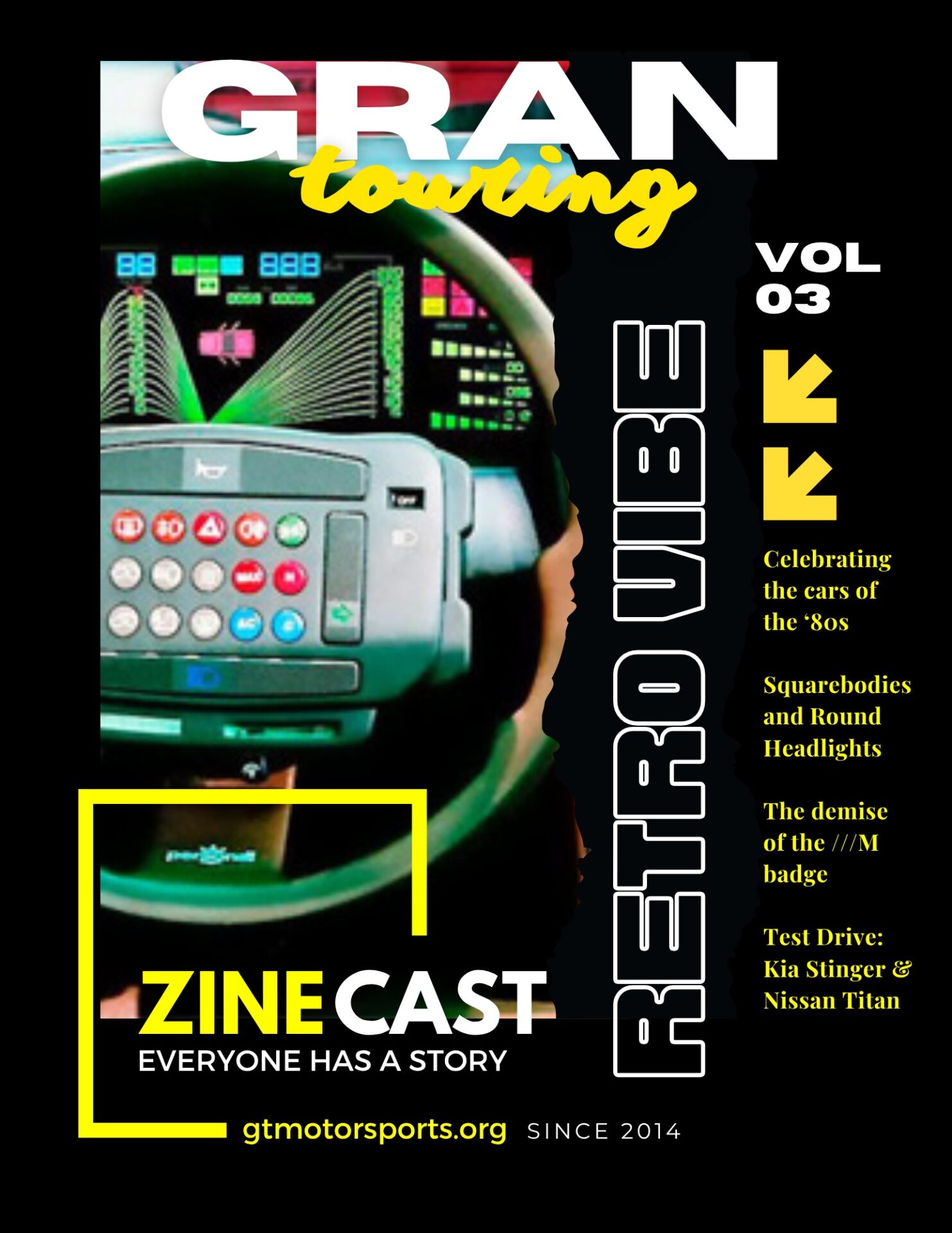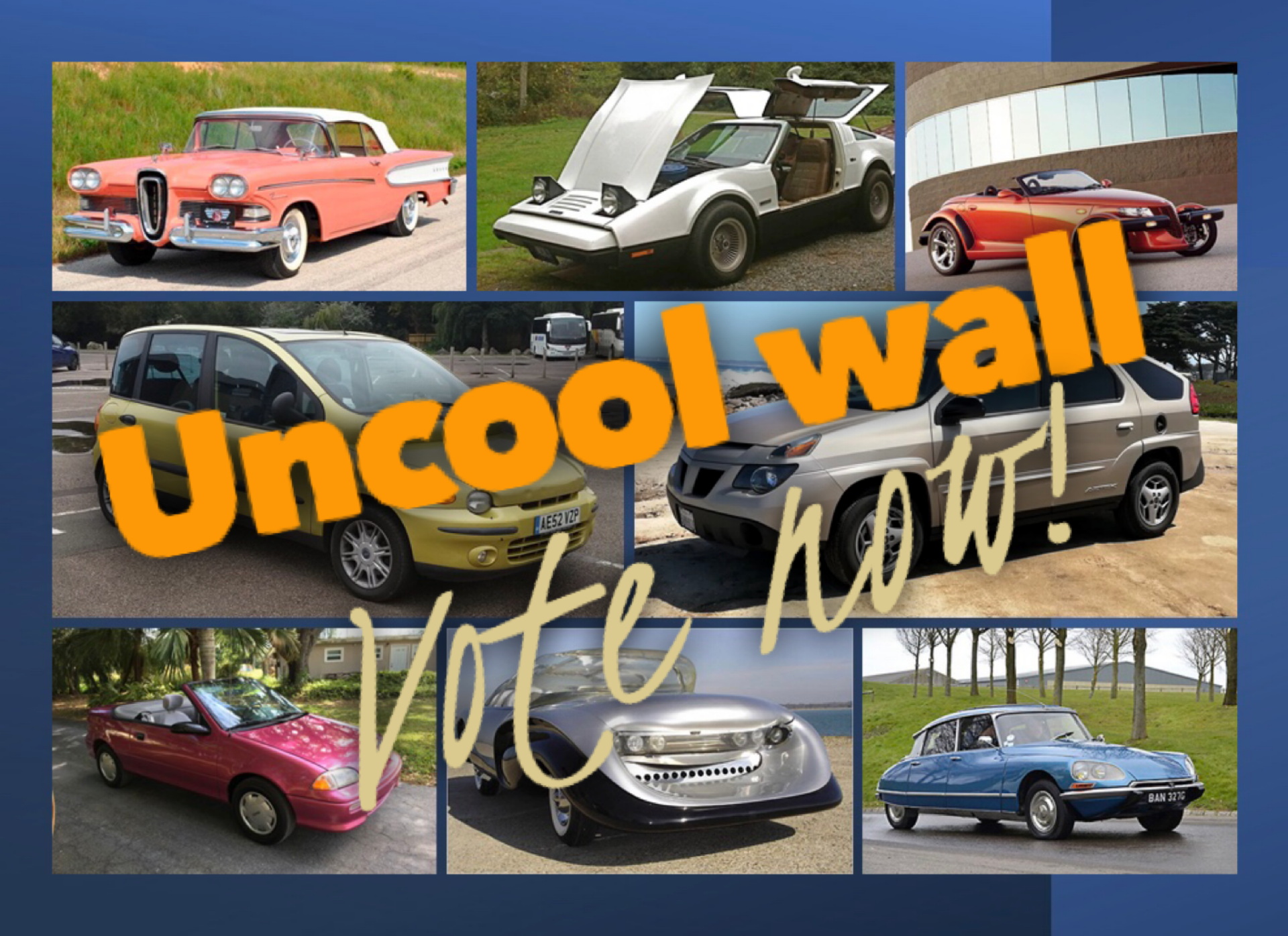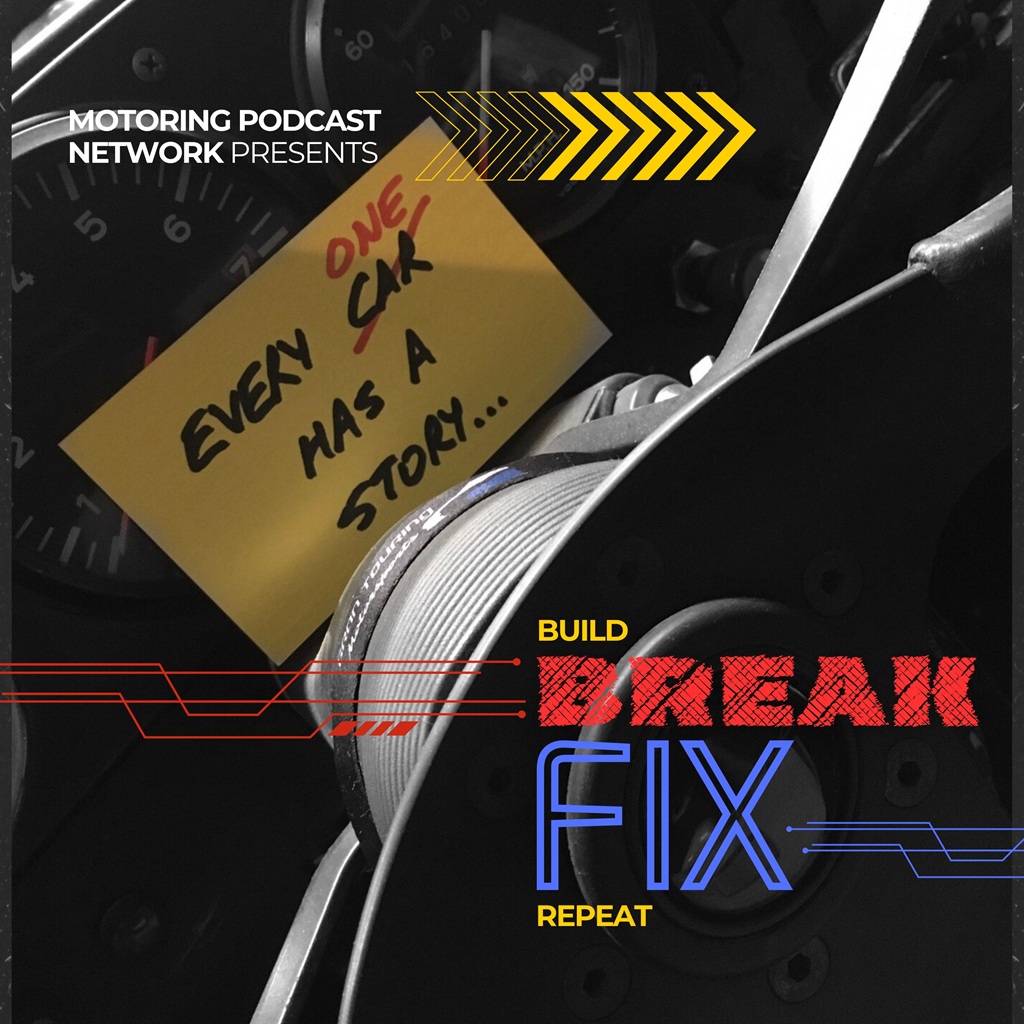Many will agree that there was a heyday of bespoke design in the automotive world which encompassed the 1950s and ‘60s; the ‘70s gave way to a new “space race” of brute force, power and muscle. But the ‘80s, oh the ‘80s. Aquanet, Jordache Jeans, and Duran Duran… setting the stage for prominent cost-cutting innovations like: high-revving high-compression 4-cylinder hatchbacks, front-wheel-drive, and mechanical fuel injection systems with James Bond-esque names like: Jet-tronic and C.I.S. Overnight, everything became “digital.” (seen above: the dashboard from a 1980 Lancia Orca) #121jigawatts.
Tune in everywhere you stream, download or listen!
The ‘80s saw a radical shift in automotive design, from flowing artistic expressions of character, beauty and physique to mimeographed copies of the same basic “square body” template. And yet, these homely and understated vehicles are some of the most nostalgia-inspiring vehicles for the “50 and under crowd” today – why is that, you might ask?
I feel, in part, that some of the fondness comes paired with a recollection of the awe-inspiring racing history woven throughout various disciplines of the time: Formula-1, IMSA, Grouppe-B Rally and DTM. If you look back over their sagas at a high level, the drivers, the tracks, the records that were set stretching from 1980 into the early 90s, it’s arguably some of the best racing of all time. But what makes it all *special* … what makes the ‘80s a decade for automobile enthusiasts like no other?
The answer is: Homologation, a set of rules that forced manufacturers to make “watered down” versions of their race cars available to the masses in limited quantities. These vehicles were “the same” cars that our superhero racing idols were going to battle with weekend after grueling weekend. Therefore, in an attempt to rekindle some of those “feels” as they say, and in no particular order, here’s an overview of some of the most memorable “square bodies” of the ‘80s.
The Italians, Romeo and Giulia

The Alfa GTV was in essence a carry over from the ‘70s, designed to compete with – and look like – the german-built Ford Capri, but the GTV didn’t really tease its hair until the mid-80s when Alfa decided to shoehorn a 2.5 litre V6 into the existing GTV shell.
Removing the disco-fever, when the GTV-6 was introduced Alfa was already sunsetting the model line and simultaneously beginning to close it’s dealerships in the US. Alfa decided to refocus their attention on the up-and-coming DTM series, bringing to bear the Alfa 75 to compete against the E30 M3 and the Mercedes 190-E. The Alfa 75 would morph to become the basis for the infamous Alfa 155 DTM. The Alfa 75 was brought to the US in a last ditch sales effort as the “Milano” before officially closing the US market in 1992.

This rag-tag Fiat Brava-based family sedan turned Grouppe-4 champion rally car was a head-turner with it’s raspy twin-cam 2.0 litre and was piloted to over 20 wins by greats like: Markku Alen, Walter Rorhl and Michele Mouton. Unlike its street version cousins, the 131 Abarth was Rear-Wheel-Drive.
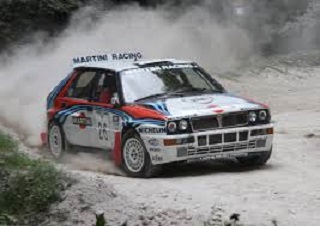
The Lancia Delta, also known as “The Tipo 831” was penned by the famed italian car designer Giorgetto Giugiaro as a competitor to one of his other designs: the Volkswagen Golf. The Delta was originally commissioned in the late ‘70s and after three generations the most notable Deltas would go on to topple the rally charts after the disbanding of Grouppe-B in 1987. Manufacturers like Audi, Peugeot and others removed their entries from Rally citing safety concerns with the sport.
Despite being an early “hot hatch,” one of the Delta’s most notable technological contributions to the era was the use of a complicated “twin-charging” system where for the first time in a compact car a supercharger and turbocharger were paired together to create over 300 bhp from a 2.0 litre 16-valve 4-cylinder.
The French Connection… and a car developed in a Shed.

Archrivals, no doubt… but Peugeot and Renault decided “alors, oui, we can make them: smaller and faster,” they undoubtedly said over a morning croissant … “but, convoluted, they must be!”
Both the road going versions of the Peugeot 205 and the Renault R5 (sold as “Le Car” in the US, and later renamed the “Clio” in Europe) were your run of the mill front-wheel-drive people movers. Quirky and very French. Checking all the boxes, both vehicles had space for your grocery run, kids, poodle pup and came with roll up windows and a radio. About as basic as a vanilla crepe gets.
How these two manufacturers bent the rules is still up for debate, but they transformed these unsalted baguettes into fire breathing, mid-engine, rear-wheel-drive missiles. Homologation be damned, these guys were onto something!

And then we have a car that was developed in a shed, somewhere in the midlands… MG, famous or maybe infamous for it’s “roadsters” like the MG-A and MG-B of the ‘50s through ’70s, decided in a “me too” moment to take their copy-cat people mover and also create a mid-engined monstrosity. MG wasn’t about to let the French have the last word.
From the land of the Rising Sun…

Meanwhile, on the other side of the world, the Japanese were perfecting the art of driving sideways very quickly and precisely. They too, decided to try their hand at producing “square bodies.” Often, the most recognized Japanese car from this era was the Toyota Corolla “AE86” (and it’s sister “The Levin”), it came with a Cosworth inspired indestructible twin-cam 4-cylinder strapped to what looked like a failed Volkswagen Scirocco design. Upon debut, with its history still unwritten, what would happen next for the plucky AE86 was anyone’s guess. “…the lightness, the balance, the strength of the engine, what seemed like an unending amount of RPMs, the razor sharp steering…” years later Initial D would help to romanticize the AE86, but their proven records on the Formula D / Drift scene really set it apart. #driftking
And for what it’s worth, I rode in my cousins brand-new AE86 in Montreal – back in the day – but I also drove my grandfather’s Notchback SR-5 version here in the US, which for some reason always smelled like a KFC. I digress, the interior in the AE86s were nothing to write home about, it really wasn’t a great place to live, terrible actually, but all that changed once you were in motion. You knew you were driving something special. Something meant to do more.
(Sigh) … then there was the Starlet, maybe the name was supposed to poke fun at the hollywood Starlets of the time, but this Corolla definitely suffers from an identity crisis. It was one of those cars that really didn’t know what it wanted to be, and looking back, Toyota might not have known what they wanted it to be. It came with a long list of engine combinations and drivetrain packages – globally, you could choose front or rear wheel drive. Even though it was modeled after the Ford Fiesta of the late ‘70s, it truly shined – in the same way as its inspiration – on the AutoCross scene. Light, short wheel base, high-revving and nimble. Those were the keys to success.
Oddly enough, both the AE86 and the Starlet were clearly entirely different vehicles, but they both donned the badge “COROLLA.” #OGK.

The CR-X… what is there to say? A pocket-sized car, sold as a 2+2: Was it a coupe? Was it a wedge? Was it a hatchback? It really had it all, it was the micro-machine you could own. Thankfully it didn’t have pop-up headlights or it would have been hallmarked as a true car of the ‘80s.
Instead, the CR-X was one of those cars that entered like a lamb and exited a lion. It was one of the few cars – of foreign descent – born in the mid-eighties that still had side-draft carburetors. Honda soon remediated that “feature” of the CR-X. Feisty and light, the CR-X gave birth to a entire generation of proud Honda owners. The CR-X is definitely missed, and we still await its true successor.
Flight of the Valkyrie: German might and magic…

BMW has always had this passion for creating understated but bat-shit-crazy vehicles. It’s no wonder the second car to wear the ///M badge was the E30-based original “M3.” Powered by a 2.3 litre four-cylinder, the M3 was used everywhere BMW could find a driver and a registration packet for it. It goes without saying that we should also tip our flat brimmed trucker caps to the E28-based M5 in the category of “flying bricks.” From Rally to DTM, BMW motorsport made its marque on the 80s.

In 1987, I’ll bet you could have overheard the engineers at Mercedes, after a pint of lager or seven, say “hell, if BMW can do it, so can we.” The “Type W201” aka the 190-E was Mercedes’ answer to the smaller, ankle-biting M3. Before AMG existed, this factory prepped 2.3 litre, stripped down luxury saloon turned racer, went toe-to-toe with BMW and Alfa Romeo in DTM. As a note, Mercedes also attempted to use the 190-E in Rally as well.

The GTI returns! The Mk1 Golf was sold in europe from 1975 until 1984, but the GTI didn’t make it to US soil until 1983. By late ‘84, Volkswagen was already working on the next generation Golf dubbed “the Golf Mk2,” which would debut in 1985 worldwide. The base Mk2 came with the standard 100 bhp 8-valve engine. But the GTI was fitted with a 16-valve, 1.8 litre engine, bilstein suspension, larger brakes and an aesthetics package setting it apart from the mundane Golf.
What the GTI lacked in sheer technical prowise when stacked against its competitors, it made up for in lightness and agility. VAG cars were rated as some of the “best handling” vehicles on the road at that time, without mods. The Mk2 GTI came in many variants not available in the US including the G60 Supercharged and Rallye AWD versions. The Mk2 GTIs are still some of most sought after VAG cars, and have been used for all sorts of Motorsport. #FAHRVERGNUGEN.

The Ur-Quattro… Godfather of ‘80s European “square bodies.” A car that turned the racing world on it’s nose, introducing military inspired AWD into a production vehicle, and then into racing. Audi (who officially merged with VW in 1985 to become VAG) had it’s growing pains during the early days of Grouppe-B. But the 20-valve 2.1 and 2.3 litre 5-cylinders would prove a best of both worlds engine able to “accelerate like a four and provide the torque of a six,” partnered with an airplane-sized Triple-K turbo, the racing 5-cylinders produced anywhere from 500-750 bhp depending on the application.
The Ur-Quattro and it’s variants: The Sport Quattro (Shorty), The S1 (Pikes Peak), and later the 5000 Trans-AM and IMSA-90-GTU are still held in high regard today. Audi toppled the rally dynasties of Lancia and others with innovative ideas and those sexy knife-edge flares. The technological advancements aside, a turbo 5-cylinder at wide-open-throttle still has one of the most notable engine sounds to date, best described as sounding like “a dragon emerging from the depths to unleash fury upon the land.” #ICH<3MIENAUDI
The Americans…
We would be remiss if we didn’t include an honorable mention for the Americans in our top square bodies review. Sadly though, there wasn’t much to highlight except for:

But all kidding aside, Dodge was bringing vehicles like the Omni-Shelby Turbo to the frey.
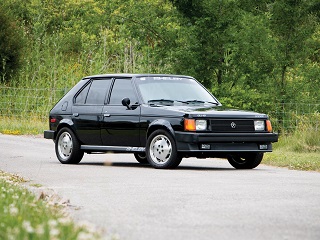
>you can stop laughing now<
Granted, the base Omni was a copy-cat of the Mk1 Volkswagen Golf – it even shared the same 8-valve 4-cylinder power plant and drivetrain – but this version was anointed by the man himself, Carroll Shelby, and fitted with a Turbo and a punched out block. The new 2.2-litre made a staggering 175 front-wheel-drive horsepower. You’re looking at: “the muscle car of hot hatches.”
Looking back with fondness…
There were plenty of other “cool” things going on during the ‘80s from movies, to music, technology, etc. It was truly the renaissance of the modern era. But as some will look back and delight in memories of Back to the Future (1981 Delorean DMC-12), Knight Rider (1982 Pontiac Firebird) and Magnum PI (1980 Ferrari 308), we hope that the vehicles here invoked that same reaction. Do you have a favorite car from the ‘80s? or special memory of driving an ‘80s classic? #cultclassics. We’d love to hear your feedback, so feel free to post your comments below.
#merrymotoring #neverstoplearning


